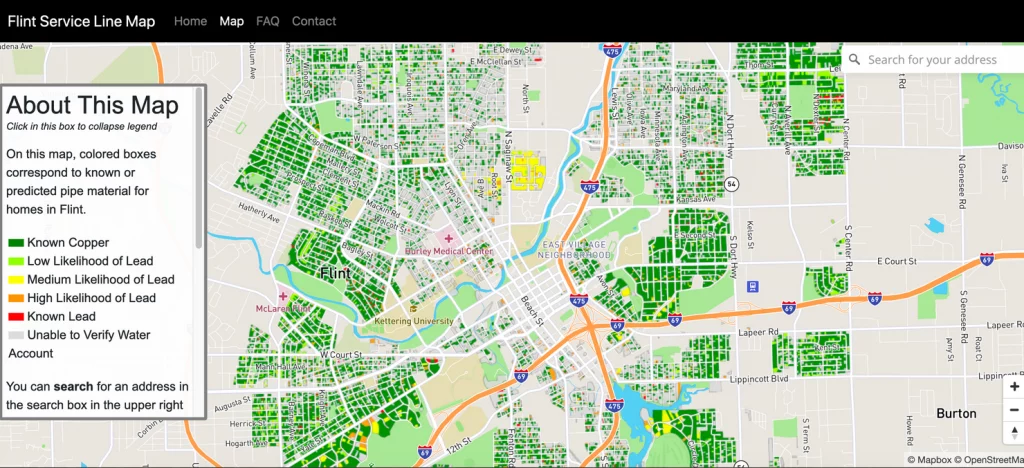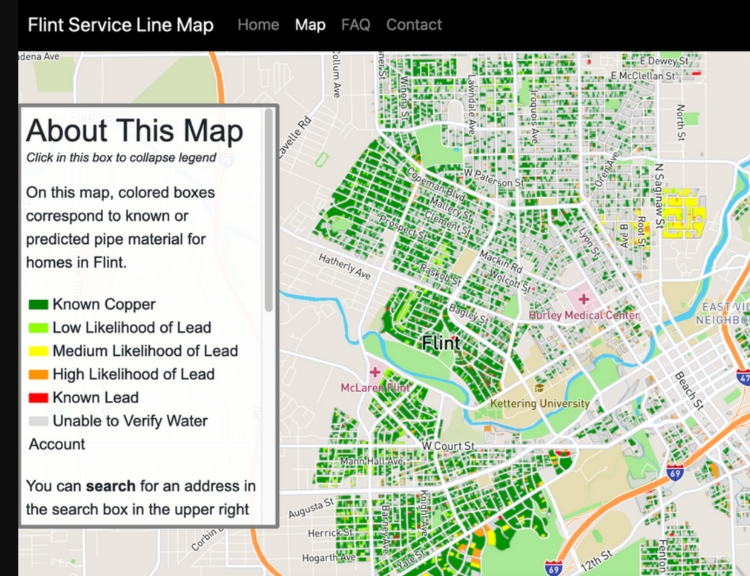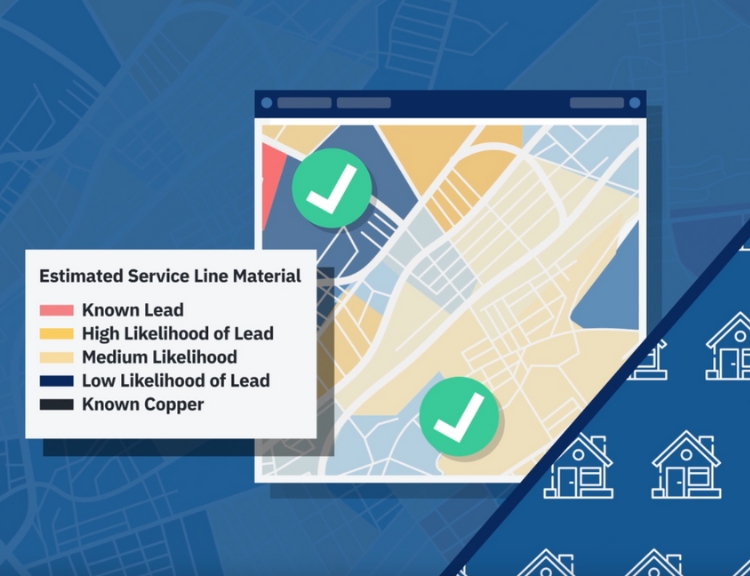Updated: Apr 11, 2021

Throughout the Flint water crisis, residents have continually called for better access to information regarding the safety of drinking water in their own homes. As the City works to complete the pipe replacement project by the end of the year, BlueConduit is excited to announce the release of the Flint Service Line Map, an interactive tool that allows residents, policy makers, and advocacy groups to examine residential water service line materials and predictions in Flint, Michigan.
While thousands of lead and galvanized steel lines across the city have been replaced with copper, there are still many homes left with unconfirmed pipes. As the City looks to complete its pipe replacement project, this map aims to empower residents with information about the status of the pipe replacement project at their address, what they can do to get their line confirmed and/or replaced, and steps they can take to reduce lead exposure.
BlueConduit’s home-by-home predictive model has been used in decision-making by legal teams, the City Council, and the pipe replacement team in Flint. This marks the first time that the public can see the risk of lead at each home in the city, and stands as an important illustration of delivering machine learning risk assessment to the general public at this scale.
The Flint Service Line Map gives users a birdseye view of the whole city, to see overall progress of the replacement program, and to get detailed information on individual homes. A user can check the likelihood that a particular residence is connected to a lead service line, and learn whether the home has had its service line material confirmed via excavation. The different colors on the map reflect the known or predicted material of the water service lines connected to each residence and include: Known Copper; Known Lead; Low, Medium, and High Likelihood of Lead; and Unable to Verify. Residents can search for specific addresses or browse the map generally to see the likelihood of whether a property has a lead service line. Residents can also access various resources regarding service line replacements and lead exposure in the map.
BlueConduit’s team is proud to have collaborated with Stacy Woods from Natural Resources Defense Council (NRDC), along with OmniSci, and MapBox on this project.
The map is a visualization tool that synthesizes the predictions of the mathematical model used in Flint to estimate the number and whereabouts of lead water service lines. In 2016, BlueConduit’s founders, Eric Schwartz, Jake Abernethy, and Jared Webb, were researchers at the University of Michigan who sought to use their data science expertise to help the team charged with replacing lead service lines to overcome challenges posed by the Flint Water Crisis. Flint’s water service line records were largely unreliable, meaning the City could not say how many lead pipes existed, nor where they were. Those records were missing for many residences, and even available ones were inaccurate. The predictive model that the researchers built assesses lead service line probability based on various characteristics about buildings and their surrounding area, including age of home and any previous line inspections or water tests. The model was therefore used to prioritize high risk areas for service line replacement, which accelerated the replacement of thousands of lead pipes in Flint. The team’s research was recognized as one of the top four award-winning papers at the 2018 Knowledge Discovery and Data Mining Conference, the top-ranked data science conference. You can learn how the pipe replacement project fits within the fight for safe drinking water in Flint by checking out the NRDC’s Flint page.
Based on a 2017 court settlement, if you are a Flint resident who had an active water account in March 2017 or who has activated a new water account since March 2017, then you are eligible to have your water service line checked for lead, free to you. And, if your service line is made of lead or galvanized steel, the City will replace it with a copper pipe for free. The City needs your permission to check and/or replace the service line on your property.
This map uses the information from that predictive model to visually communicate the information about replaced and remaining lead service line in Flint. The map is based on data received from the City and is updated each time new data arrives (approximately every month).
Knowing what your home’s water service line is made of can help you make informed decisions to reduce lead exposure. But lead pipes are only one potential source of lead in drinking water. Faucets, fixtures, and other plumbing elements inside the home can also contain lead. You should consider these and other sources of potential contamination in assessing your home’s overall safety. Residents who are concerned about the presence of lead in their homes, especially households with children, can take precautions to reduce their risk of lead exposure. To learn more about lead exposure risk and how to mitigate this risk, visit the EPA’s site on the presence of lead in homes.
For questions regarding the map, please contact the BlueConduit team using this form.
About BlueConduit:
BlueConduit leverages machine learning to ensure that residents of every community regardless of means have access to clean water. Growing out of research at the University of Michigan starting in 2016, BlueConduit has used predictive models to help cities identify which homes have lead service lines, providing a home-by-home inventory to guide their removal in a cost effective way. Their work in the field has appeared in The New York Times, The Chicago Tribune, The Atlantic, and the Smart Water Networks Conference. The team’s research was recognized as one of the top four award-winning papers at the Knowledge Discovery and Data Mining Conference, the top-ranked data science conference. BlueConduit is working with a growing list of utilities and municipalities throughout the midwestern and eastern United States. BlueConduit’s headquarters is in Ann Arbor, MI. Learn more about BlueConduit at blueconduit.com.





